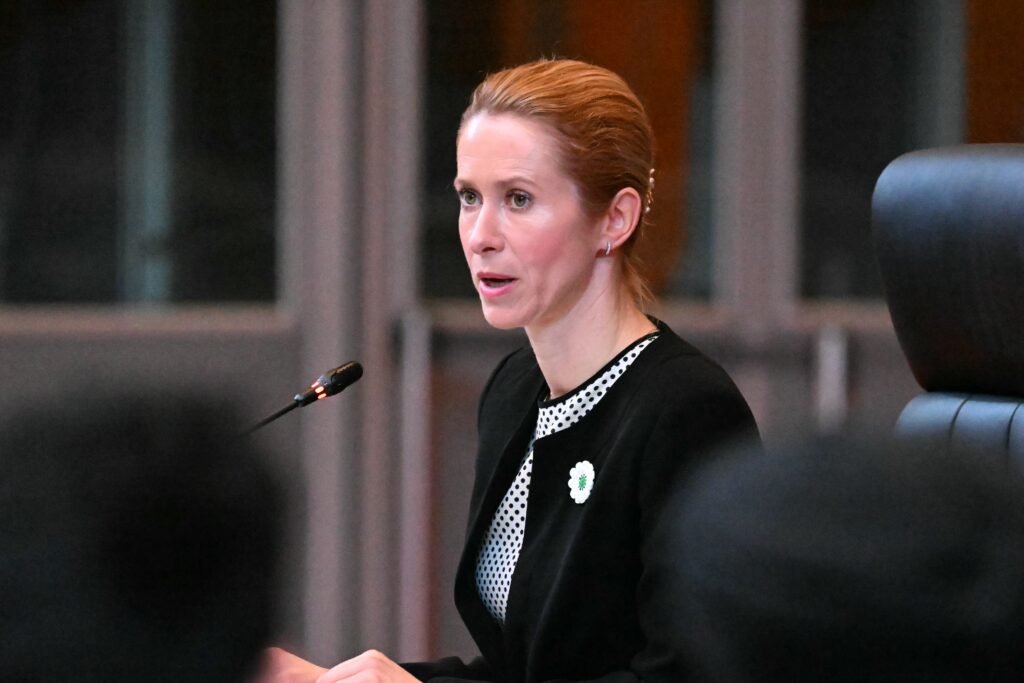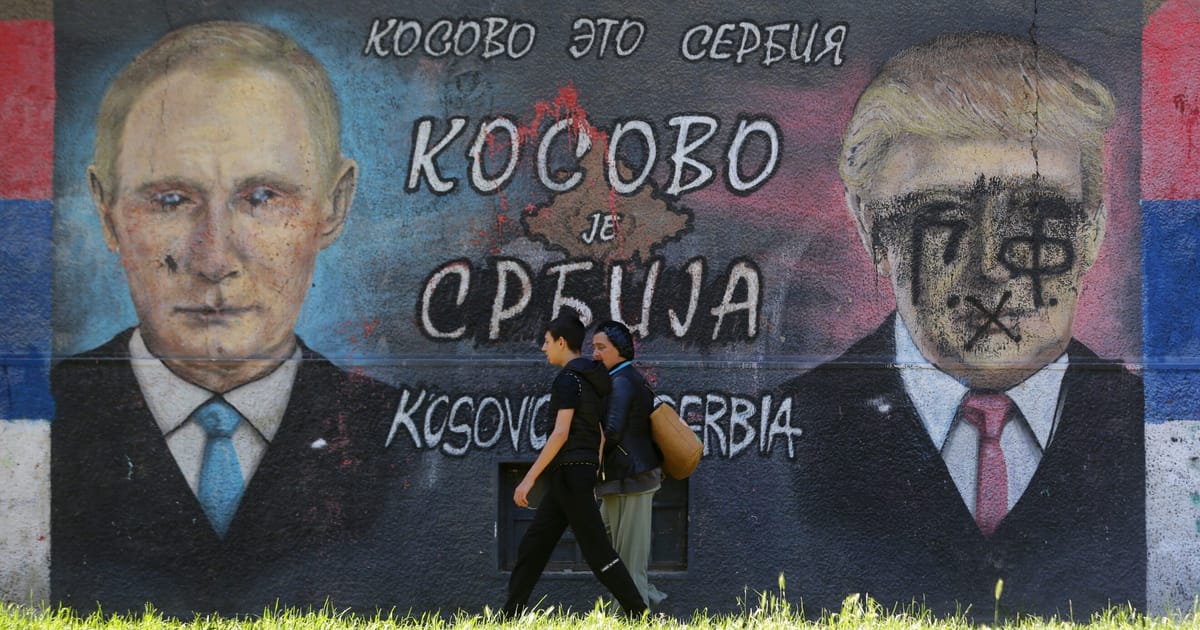Such demands show Europe is growing more comfortable in putting its positions forward on the resolution of Russia’s war against Ukraine, with views that have recently been more pro-Kyiv than Washington’s under Trump.
 Chief EU diplomat Kaja Kallas, after an emergency meeting of European foreign ministers on Monday, said that no concessions should be discussed before Russia agrees to a full ceasefire. | Mohd Rasfan/EPA
Chief EU diplomat Kaja Kallas, after an emergency meeting of European foreign ministers on Monday, said that no concessions should be discussed before Russia agrees to a full ceasefire. | Mohd Rasfan/EPA
Earlier this week, the leaders of Germany, France, Poland, Finland and the U.K., as well as the head of the European Commission, warned that any peace deal needed to respect Ukraine’s “territorial integrity” — code for not forcing Kyiv to give up land — as well as security guarantees.
Though Kyiv has not publicly entertained the prospect of conceding land to Russia, Republican Senator Lindsey Graham said a final peace deal would most likely include “land swaps” — a point echoed by Trump’s chief negotiator Steve Witkoff and, later on Monday, Trump himself.
Nonetheless, Trump, while indicating he envisages Ukraine ceding some territory to Russia, said he hopes some land will go the other way. “Russia has occupied a big portion of Ukraine,” he said. “They’ve occupied some very prime territory. We’re going to try and get some of that territory back for Ukraine.”
While Trump has declined to talk about security guarantees, his stance toward Ukraine has progressively moved closer to the European one following months of fruitless contacts with the Kremlin. Trump voiced frustration that Putin was “tapping him along” on Ukraine, while shortening a proposed deadline for a full ceasefire.
Trump’s engagement is in marked contrast to his attitude during the first few months of his presidency when he mainly spoke to Putin directly.
